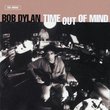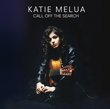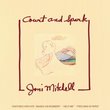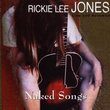| All Artists: Matmos Title: Civil War Members Wishing: 1 Total Copies: 0 Label: Matador Records Original Release Date: 1/1/2003 Re-Release Date: 9/23/2003 Genres: Dance & Electronic, Alternative Rock, Special Interest, Pop, Rock Styles: Ambient, Electronica, Techno, Experimental Music Number of Discs: 1 SwapaCD Credits: 1 UPCs: 744861059028, 766483352943 |
Search - Matmos :: Civil War
 | Matmos Civil War Genres: Dance & Electronic, Alternative Rock, Special Interest, Pop, Rock
|
Larger Image |
CD DetailsSimilarly Requested CDs
|
CD ReviewsMatmos find texture Vargiu Riccardo James | Bologna, Italy | 12/04/2003 (5 out of 5 stars) "[A foreword: Other than THE CIVIL WAR, I own and am very familiar with A CHANCE TO CUT IS A CHANCE TO CURE and DO YOU PARTY? Opinions and comparisons in my review, therefore, are limited to these albums by Matmos.]"Micro-beats" virtuosos, Drew Daniel and M. C. Schmidt, find texture for their music at last, on THE CIVIL WAR. Texture, as in an underlying foundation for all their bleeps and crackling sounds to tinkle over. At last, in the sense that such a musical underpinning is precisely what's missing in their previous compositions, notwithstanding a few significant exceptions (such as the marvellous piece named "Satie," off Daniel's DO YOU PARTY?). What's rather extraordinary is that they didn't find such a texture in the layering of drones, hums or other electronically generated bars, in the style of - say - Boards of Canada, Mum or even Stars of the Lid, just to mention three (very different) groups in the greater electronic music scene. Oddly enough, they located it in a great variety of traditional musical instruments - namely: hurdy-gurdy, banjo, acoustic/electric/bass/dobro guitars, drums, piano, chimes, violin, bassoon, tuba, peck horn, trumpet - played by Matmos themselves but also by a thick group of friends (Blevin Blectum, Mark Lightcap, Steve Goodfriend and several others). This extensive use of traditional instruments, in some cases of instruments from a remote past, makes it possible for THE CIVIL WAR to touch on, and refurbish, several genres that one would be tempted to say have nothing to do with electronic music: 1. medieval popular music (and particularly popular music from medieval Scotland/Ireland and other Northern European countries), 2. American country-folk music and 3. experimental rock. Indeed, there is no more than one track on THE CIVIL WAR that could fit into any of their previous works: "Pelt and Holler" is the only piece which is based on sampling, sequencing and mixing alone, while each and every other is more complex by far than anything off their other records (structurally speaking, that is, but also with reference to the ever-shifting "mood" of the piece).It should be clear by now that THE CIVIL WAR is an impressive collage, an attempt to syncretize styles and/or traditions of music which are generally kept separate, perhaps notwithstanding a common root. The civil war the record title refers to could be thought of as an allusion to more than just the American war of secession. I don't think it would be too far fetched to suppose that Matmos were also jokingly hinting at the clash between music old and new, fast and slow, electronic and instrumental. A clash which, indeed, is often a lot more about the way things are perceived than about the way they actually are. For instance, this record certainly reminds us to which extent popular medieval music was based on repetition, looped sequences, energetic beats. In other words, it reminds us that it was - back then no less than today - "pop," as in "for the masses." Needless to say, it does so in such a cerebral way that, unlike the material it draws on, this CD will never quite suit the average music consumer, let alone the masses (and I mean this in the most neutral way possible: to me, it's neither a good thing nor a bad one).The vast majority of pieces on THE CIVIL WAR exhibit a playfulness, a fascination with music itself, a desire to explore it for its own sake. This leads to the tracks on the album being rather experimental in tone, as if they were simply a (battle?) ground for Matmos to challenge with the force of their talent and to conquer. Once again then, Matmos are true virtuosos in their field, loving what they do to the point of wanting merely to indulge in it to the fullest. This "inwardness," this Mannerism, this light-hearted toying with music just for the fun of it is what's so unique about this album, but it's also the one thing that some might consider pestering. Although I am highly impressed with THE CIVIL WAR, and indeed find it to be their best output so far, I am inclined to believe that they will truly outdo themselves and express their full potential only when they will veer towards a more "narrative" (as in, less "abstract") form of music. "The Struggle Against Unreality Begins" is good proof of that, I think. This track seems to me to be the highpoint of the record, and in my opinion it is the one and only piece that really appears to want to "reach out," to communicate an intelligible sequence of emotional states. It is the only "humanized" piece, if you will. Then again, this might just be a personal perception: of course the way each person relates to music is very subjective and has to do with too many variables for me to account for. All in all, the more I listen to THE CIVIL WAR the more I realize that it is an outstanding work of art, a genuine milestone. What will Matmos come up with next? [Total running time: 45:52; Enhanced CD: contains Mark Boswell's video for "Stars and Stripes Forever"]" Of rabbit pelts and hurdy-gurdies castlevista | Mesquite, TX United States | 09/30/2003 (5 out of 5 stars) "In 2001's "A Chance to Cut is a Chance to Cure," Matmos explored the sonic world of plastic surgery, composing microscopic beats from the sounds of noses breaking and fat being sucked through a tube. Disgusting, yes, but the result was incredible. Finally, a music concrete album that sounded completely original! Now, whether by accident or on purpose, it seems Matmos have made the exact opposite of "A Chance to Cut." This time they step back in time to the seventies and eighties to use old analog synts, even more back in time to the American backwoods, employing rabbit pelts for basslines, and, yes, once more to the Medieval ages, using (I'm not lying) hurdy-gurdies, oboes, and violins.That being said, I think "Civil War" and its predecessor are actually very much alike. They both bounce between upbeat, almost silly songs, to dark, vaguely disturbing, bassy epics. The "Civil War"'s production is excellent, the clicks and beeps programmed to metronomic perfection, and the melodies are as sublimely beautiful as ever.Only clocking in at about 45 minutes, this album is exhausting. Your emotions are tugged this way and that through nine messed-up but insanely gorgeous songs. This, in my opinion, is the biggest electronic album of the year, not in popularity, but in scope." Ye Olde Laptop Phil Avetxori | 12/05/2003 (4 out of 5 stars) "Conceptual art may work well in the visual realm, where the subversion of the gallery and the sanctity of the artwork opens the closed system of the aesthetic object to unforeseen linguistic and semiotic pathways. For the most part, the same can't be said for conceptual art as music. Early on, Matmos were known for their unusual sound sources, often restricting themselves, within a track, to sounds produced by a single object. It was a fascinating strategy, but one that, inevitably, restrained the talented duo from exploring their full potential. Then came "The West", 1999's foray into country-tinged post-rock abstraction (post-rock godfather David Pajo, of Slint/Tortoise/Aerial M/Papa M fame was one of many contributors). Matmos' arrangement and processing talents were suddenly in the service of a more overtly musical vision. Although conceptual sampling returned to the forefront on 2001's medical-themed "A Chance to Cut is a Chance to Cure", the collaborative fresh air of "The West" had clearly pulled the pair out of the stuffy IDM bedroom and into bright light of accessibility."The Civil War" sees a return to the "live" instrumentation of "The West", with guitars, banjos, tubas, flutes, trumpets, hurdy-gurdy, etc. layered into a hallucinatory take on traditional English and American music. The use of digital processing is much more subtle here than on past efforts, which is a wise move. The novelty of glitch derailment that provided a subversive twist to "The West" no longer surprises. Instead, Matmos have focused on timbre and compositional integration, using effects to blend various components together, creating surprising resonances between such culturally loaded instrumental elements.If I have one complaint about "The Civil War", it's the lack of harmonic variety, and the repetitive simplicity of many of the melodies. Not that I expect self-taught electronic musicians to use sophisticated counterpoint, but as the sound palette is dominated by melodic instrumentation, a little more quirkiness in the melodies themselves would have been a nice touch. As it is, too many of the guitar lines are uncomfortablty close to instrumental post-rock and alt country cliches. On the whole, however, this album represents a further refinement of the group's personal style, continuing their bucolic march from cerebral experimentation to musical expressiveness."
|

 Track Listings (9) - Disc #1
Track Listings (9) - Disc #1






